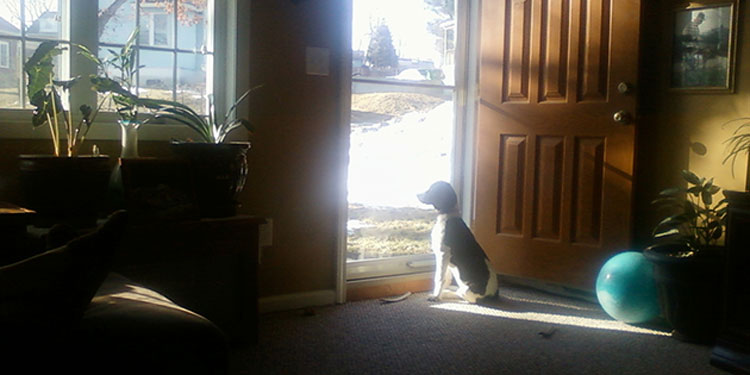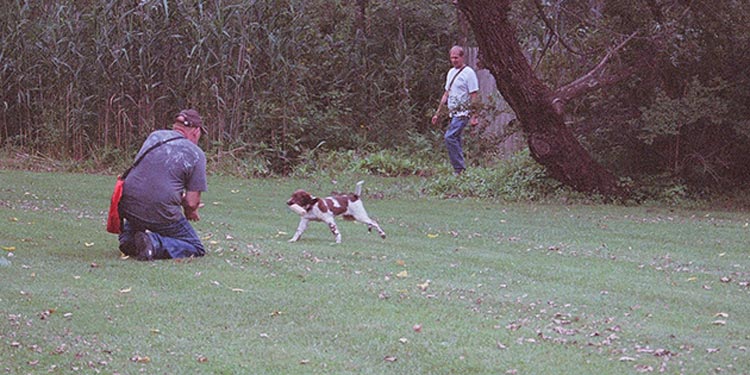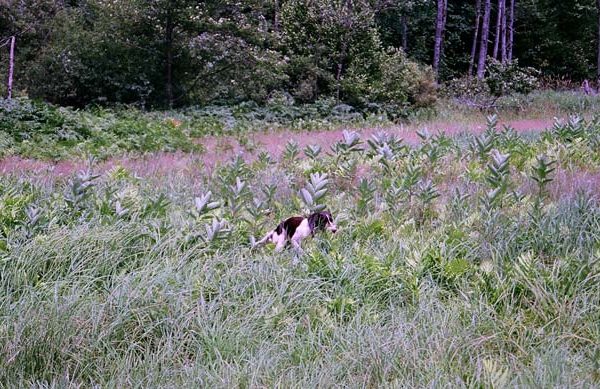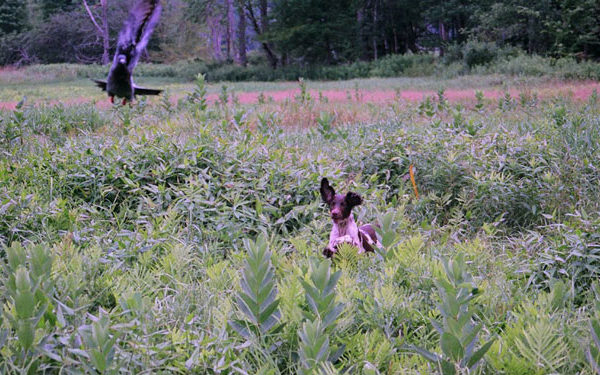
Today, it still amazes me as to how long an old wives tale can manage to continue down through the grapevine of time, passed on from one generation of outdoor enthusiasts to another. I thought it would be appropriate at this time to address one of the biggest “tales” and misconceptions that I continually hear while talking to prospective spaniel buyers and even from some people in the sporting dog industry today. I will attempt to shed some solid facts based on today’s modern society and the canine, while sharing the experiences of nearly twenty years of breeding and training at our kennel.
Let’s first annualize the old wives tale “if you have a hunting dog it should stay outside in a kennel”. This fallacy goes back as far as I can research. I would venture to say that George Washington and Alexander Hamilton had this very discussion about hunting dogs on the porch at Mt. Vernon, Virginia. The origination of this misconception probably has its roots as far back as when early indigenous peoples first started to domesticate the wolf as a hunting dog! Early man’s relationship with our modern day’s canine cousins was probably a symbiotic one; the dogs helped in the hunting and were feed part of the harvest. They were welcomed into the family unit and cared for; the dogs provided protection and an early warning system against invaders and other animals. Naturally, they stayed outside the cave or dwelling to provide this service. Thus, the old wives tale begins!
This attitude held fast even through to the 1950’s. However, bear in mind that in the generations previous to the 1950’s, dogs were not viewed in the same light back then as they are now. Back in those days hunting dogs were view as a tool and used only for that purpose, thus staying consistent with the caveman analogue. The hunting dog was not commonly considered a family companion and was rarely allowed any personal socializing with the family unit, instead being treated as a piece of equipment much like horses were in the 1900’s. As the 1960’s came around with the popularity of canines becoming “man’s best friend” also brought a revelation of knowledge of the sporting dog’s natural gentle demeanor. It was inevitable that the attitude about housing and caring for the hunting dogs would change dramatically from this time forward. Leaders of the household had begun to build quite a close relationship with their hunting dog; realizing their true demeanor and making them a hunting companion.
The fallacy that a hunting dog should stay outside, goes back as far as anyone can remember. Right about that same time the sporting dog games were on the verge of taking a strong foot hold as a pastime sporting dog enthusiast and the professional training industry came into being. It was also during this era that people began making the hunting dog a family companion, the consequences of which would help to excel in their gun dog training. Naturally, the hunting companion would work harder to please the owner. Many trainers noticed quickly how much faster the dogs learned their schooling and had progressed rapidly through their advanced training programs at an earlier age. There was most definitely a difference between those dogs that were kept outside verses those that were part of the family unit.
Personal daily contact with the family unit had helped to fully develop this social animal’s environmental requirements and assisted them in excelling at what they originally were bred to do; hunt. Fulfilling the last void in there temperament by human compassion, the hunting dog was working not only to find game, but attempting to work it’s hardest to please the owner at the same time, as well. However, as time progressed and canines gained in popularity, many hard-core followers from the old school were reluctant to try this new idea, refusing to change their old ways of doing things. Many hard-core believers began to fabricate and exaggerate reasons for keeping the hunting dog outside. Thus, handing down the old wives tale.
Truth be known, hunting dogs bond better and have better temperaments if they are inside and part of the family unit. To this day, I am sure that if you speak to several different gun dog people you will still hear this fallacy. You will get several different reasons why the dogs should remain outside. Isn’t it ironic how over the passage of time stories can get so exaggerated? Oh, believe me, this tale has had plenty of time to gain in exaggeration and it surely has!
For close to twenty years I have dedicated my career to the sporting dog arena. On the public educational side of things, informing potential gun dog owners about how the gun dog fits into the family unit and still is an exceptional performer in the field is the first misnomer I still usually have to quell. The hunting companion that sleeps in the house and goes hunting with dad on the weekends is a true fact of reality; here in today’s society where the statement “man’s best friend” is a cherished paraphrase. Professional breeders have been facing this new challenge for many years while developed their strain of gun dogs. Professional trainers realize that their strain of gun dogs must fulfill more than just one need. We now must produce exceptional performers in the field, and our strain of gun dogs has to consistently prove itself as being a welcomed family member with unquestionable temperament around small children. The literal old wives tale “ if you have a hunting dog it should stay outside in a kennel”, no longer has any basis in today’s reality. The question that we must now asked is this: Does the breeder of a specific breed of gun dog have a properly developed strain that will fill my needs both in the house, around young children, and also have the natural hunting ability for a successful day in the field? Time to face it folks, we are in the twenty first century!





